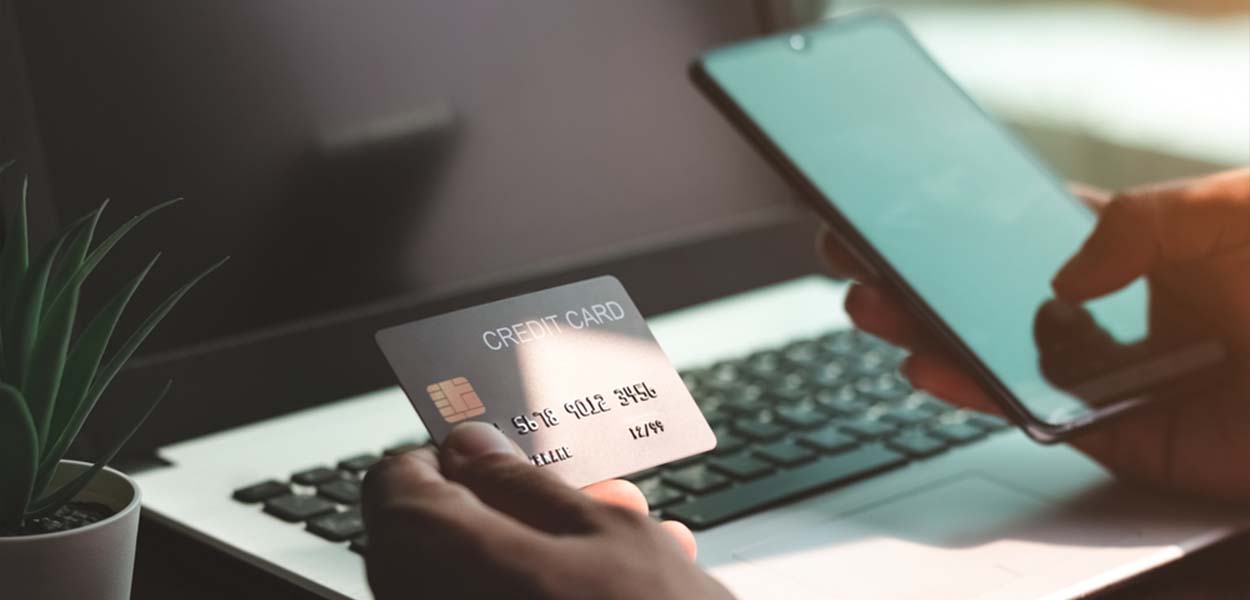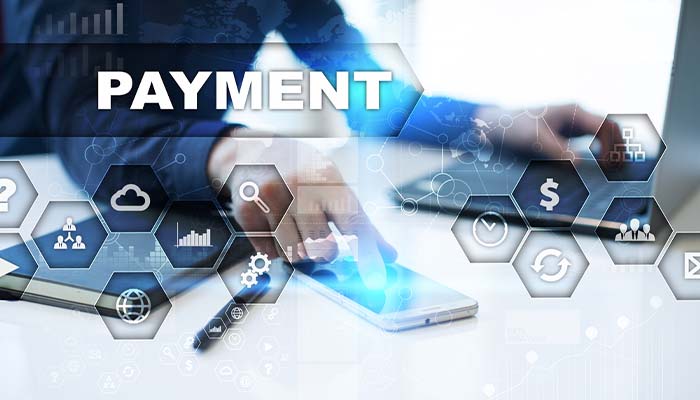Online Payment Gateway Development
How To Create a Payment Gateway?
February 02, 2023 3:51 PM
Online Payment Gateway Development
February 02, 2023 3:51 PM

If you're a business owner who wants to control their company's operations completely, then consider creating your payment system entirely from the ground up. This is the most advanced level of personalization, but it's essential to be aware of the difficulties involved.
Here's how you can create an online payment system for your website, as well as some tips to consider when making it.
Payment gateways are complicated system that allows credit and debit card transactions to be done offline and online retailers. It ensures a smooth flow of these transactions by encrypting private data and moving them between a customer or online store and the bank.
The shop is a payment platform, and the bank is the payment processor. This means that the payment gateway facilitates communication between all three participants in this payment procedure. It ensures that transactions run securely by utilizing various anti-fraud techniques and working according to PCI-compliant requirements.
From a technical point of perspective, the payment gateway acts as an additional layer to that of the processor. It takes in data from the customer, and based on the method of payment chosen, it redirects the price towards the payment processor in a readable format.
There are a variety of ready-made payment options that you can use to connect to your online store. In our previous article, we looked at the top payment gateways and provided an example of a credit card processing chart. However, you will need more than these choices to give you complete control over the payment process. In addition, there will always be some points you'd like to modify or include. In light of this, we thought it was time to share our ideas for creating a payment gateway .
We discuss the pros and cons and discuss some of the challenges of this kind of project.
It is crucial to know what the difference is in the relationship between the payment gateway as well as payment service. Although the former is software, the latter is the capability to use the software to fulfill its function.
Therefore, just because you've written a functional program doesn't mean you can incorporate it into your website and sell it to different retailers immediately.
In the beginning, you must complete the certification process and connect to the payment processor. Be aware that building software is a manageable job. The registration process could be lengthy or even a few years. After you have obtained all the required permissions, will you be able to act as a service provider?
These are some of the businesses that could greatly benefit from constructing a separate gateway:
Large-scale retailers with a high turnover don't want to rely on a third-party provider.
Insolvent billing companies who wish to upgrade or replace their software.
Hi-growth providers of payment that require sophisticated payment processing systems.
IT companies who intend to expand their business through being an online payment service provider.
Banks that acquire banks looking to enhance their front-end solutions.
Lower costs. With ready-made online payment options and payment methods, you will be charged lifetime fees for every transaction. In most cases, you will have to pay an annual fee for registration. Custom solutions allow you to control your destiny and reduce the cost of processing payments.
Customized features. Even the top worldwide payment processors will only satisfy some of your requirements. When you review all the payment options, you will observe that some do not support multi-currency transactions. Some are not compatible with recurring fees, and some are expensive. If you choose to go with custom development allows you to obtain exactly what you need.
Additional income. If you own a payment gateway allows you to be a service provider. You can charge registration fees as well as transaction charges from other merchants. So, imagine a new way to develop your business to increase your profits.
Development time. Custom gateway development means that you'll be spending time on the preparation phase, then the development process, testing and maintaining. It'll take longer than integrating a pre-designed solution. But in the end, you'll gain since you'll be free from the recurring costs and have an additional revenue stream.
The cost of certification is. To run your gateway, you'll need access to the processor and meet the PCI specifications. We'll be honest; it's a lengthy and slow process. Additionally, it has costly expenses. If you opt for a white-labelled option, you will not have to deal with this problem when you connect to the gateway once all the dust settles.
The sole responsibility. As a service provider is your sole responsibility. You are entirely in charge of the security of transactions. You are responsible for protecting the cardholder's information and minimizing the chance of fraud.

In this article, we'll outline the steps to follow on the road to becoming a payment provider.
You can place your gateway's data on a third-party server or build your server. This option grants you full power, but you'll need to manage the data center and go through a PCI audit. If you choose to host your data outside, I suggest you look into AWS. They have developed their infrastructure and provide solutions to all types of businesses.
Payment processors are a firm or financial institution that handles online transactions. It could be an institution of a bank or payment system such as Visa, Mastercard, AmEx or any other. To connect with the processor, you'll have to get their API documents and implement them according to the instructions.
Additionally, you will need to create an API external for your customers. The API will allow them to make payments (one-time or periodic) for processing and also be able to receive payment statuses. You can also choose us as your FinTech software development company.
A CRM system effectively keeps client information in order, manages transactions, and monitors managers. It can help you perform intelligent forecasting and prevent many errors. It has an enormous customer base. As a payment processor, it can significantly assist in managing new and existing clients.
Tokenization is keeping credit card information at the gateway's end instead of the store's server. Tokenization is designed to prevent merchants from having to store sensitive information when they charge recurring fees. To do that, the purchaser's card number is changed to an electronic token that the online store then uses. It is essential to create tokenization if you plan to host the gateway on an individual server.
This involves the preparation of hardware to secure the data on the card and software that will be compliant with the PA-DSS guidelines. If you decide to host your server elsewhere, these issues fall on the server's shoulders.
EMV is an acronym for Europay plus MasterCard + Visa. It is a global standard for transactions made with bank cards using the chip. To obtain a certificate, you have to complete these things:
Contact EMVCo to request the EMVCo Pro Provider Number.
Log in to the lab and sign a quote for access to the laboratory's 3DS Test platform.
Be patient until you have official acceptance of the test results.
You will receive a confirmation letter from the EMVCo
Contact the centre of certification and follow the process for obtaining certification.
You must have the certificate as well as the licence.
It's a must when dealing with online transactions. PCI DSS standard seeks to decrease fraud by setting 12 mandatory guidelines for software that uses credit cards.
Additionally, it splits companies into four levels based on the number of transactions. To get approval, you need to request a PCI audit. PCI audit. It is an expensive process that is recommended to repeat at least every year.
Here, I'll provide some tips to help you construct an attractive gateway.
Integrate with multiple processors. If you have more processors that you join, the more possibilities your merchants have. In particular, the sellers can select between acquiring banks to establish their own operating accounts. They will also have an option for transaction fee rates.
Create a gateway that is adaptable and flexible. A modern payment gateway will rapidly adapt to the demands of the merchant. Therefore, ensure that you provide the possibility of customization. Mainly take note of the different various payment options. The more payment options the buyer is given, the greater return the seller could earn.
Implement a dispute resolution interface. Merchants frequently face disputes in their commercial operations. Thus, you'll benefit them by providing an easy way to contact the issuing bank.
Allow merchants to access APIs. The owners of businesses are seeking an easy method to integrate payment gateways into their stores. If you can provide a simple way to integrate it, you'll increase the chances of acquiring new customers.
Offer customer support. Even the most minor issues with your payment gateways could result in severe losses to merchants. Make sure you employ competent managers and create chatbots that are accessible 24/7. It can assist you in resolving issues quickly if they arise.
A custom-designed payment gateway is the best option for companies with a stable financial structure who wish to conduct business according to their company's rules. Reach us for more information related to the payment gateway. When you create your product entirely from scratch, you customize it to meet your requirements and get the highest effectiveness.
Additionally, the development of a payment gateway provides numerous opportunities to increase your profits. If you plan to market the service to other merchants, ensure it is secure and easily adaptable. The set of features should include the following:
Several payment processors.
A convenient dispute settlement interface.
The ability to report easily.
Strategy
Design
Blockchain Solution
Development
Launching
Testing
Maintenance
Contact US!

Plot 378-379, Udyog Vihar Phase 4 Rd, near nokia building, Electronic City, Phase IV, Sector 19, Gurugram, Haryana 122015
Copyright © 2025 PerfectionGeeks Technologies | All Rights Reserved | Policy
Contact US!

Plot 378-379, Udyog Vihar Phase 4 Rd, near nokia building, Electronic City, Phase IV, Sector 19, Gurugram, Haryana 122015
Copyright © 2025 PerfectionGeeks Technologies | All Rights Reserved | Policy